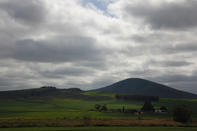Soil analysis should be done every few years, to guide fertilisation decisions and correct nutrient imbalances and shortages before planting wheat.

The fertilisation of wheat programme would have to be adapted to accommodate soil variation in different part of the farm as well as the same land, soil fertility, climatic conditions, targeted yields, tillage method as well as crops that were planted during previous phases of the crop rotation.
Farmers need to balance fertilisation requirements and the cost of this to ensure production remains profitable. It does not make sense to spend more money on fertilisation than the income potential of a specific land.
The key to fertilisation is to ensure that plants have access to enough nutrients to unlock their full productive potential. A nutritional shortage may have a negative impact on growth and cause plant stress, which in turn render plants more vulnerable to insect attacks and disease outbreaks.
Soil Acidity of Wheat
Wheat should ideally be produced in soils with a pH ranging between 5.5 to 6.5 on a calcium chloride scale. Certain soil nutrients may become unavailable when the pH falls below 4,5. Lime can be used to increase pH levels before planting, with the required volumes depending on the pH level and the type of soil.
The lime source should be selected correctly. According to the Agricultural Research Centre Small Grain Institute’s Guideline. Production of Small Grain in the Summer Rainfall Area, dolomitic lime should be used when the ratio between calcium and magnesium is higher than 10:1. Calcitic lime should be used if the ratio is below 10:1 and the magnesium content is higher than 40 mg/kg (ppm) and dolomitic lime when the magnesium content is lower.
Lime should be administered three to four months before planting and thoroughly mixed with the soil with an offset or disc and then ploughed in, to a depth of 200 mm to 400 mm. Farmers can plant varieties with a good aluminium tolerance, to alleviate the impact of acid soils on production.
The Big Three
Nitrogen, phosphorous and potassium all have a big impact on production. Farmers should consult a soil scientist or Grain SA for recommended applications and help them adjust these recommendations according to the requirements of their production programme and environment.
It is also good to talk with other farmers in the region about their fertilisation experiences, to benchmark results against those of others. No more than 20 kg of nitrogen should be applied during planting, since nitrogen can burn seed and have a negative impact on germination, according to the Agricultural Research Centre Small Grain Institute’s Guideline.
Production of Small Grain in the Summer Rainfall Area. Higher applications should be made before planting or nitrogen should be band placed away from the seed during planting if more than 20 kg/ha will be applied. Many farmers make two to three nitrogen applications to prevent leaching and ensure that the plants have access to enough nitrogen at the right time of development.
Applications should be adjusted downwards if a crop, such as legumes, that add nitrogen to the soil, was planted the previous season, but adjusted upward if high yields were produced the previous season or when there is a lot of residue that has not broken down in the soil at planting time, which may lead to negative nitrogen period.
Phosphate applications should be guided by the planned production per hectare and the amount of phosphate available in the soil. Potassium is seldom a cause of poor yields in South Africa, but deficiencies may occur in high alkaline sandy soil, under cold, wet and or dry soil conditions and in soil with very high levels of magnesium and or calcium.